Deep fat fryer purchasing advice: how to choose the right product
- What you need to know
- There are many different types of deep fryers. In addition to the typical electric fryer, there are cold-zone fryers, hot-air fryers, roto fryers, spin fryers, and gas-heated fryers.
- Hot-air fryers are becoming increasingly popular. They use hot air instead of hot oil.
- The most important features to have on deep fryers are a temperature controller, a temperature limiter, a timer, and a dishwasher-safe pot.
- There are a few things you need to know to properly use and maintain a deep fryer safely.
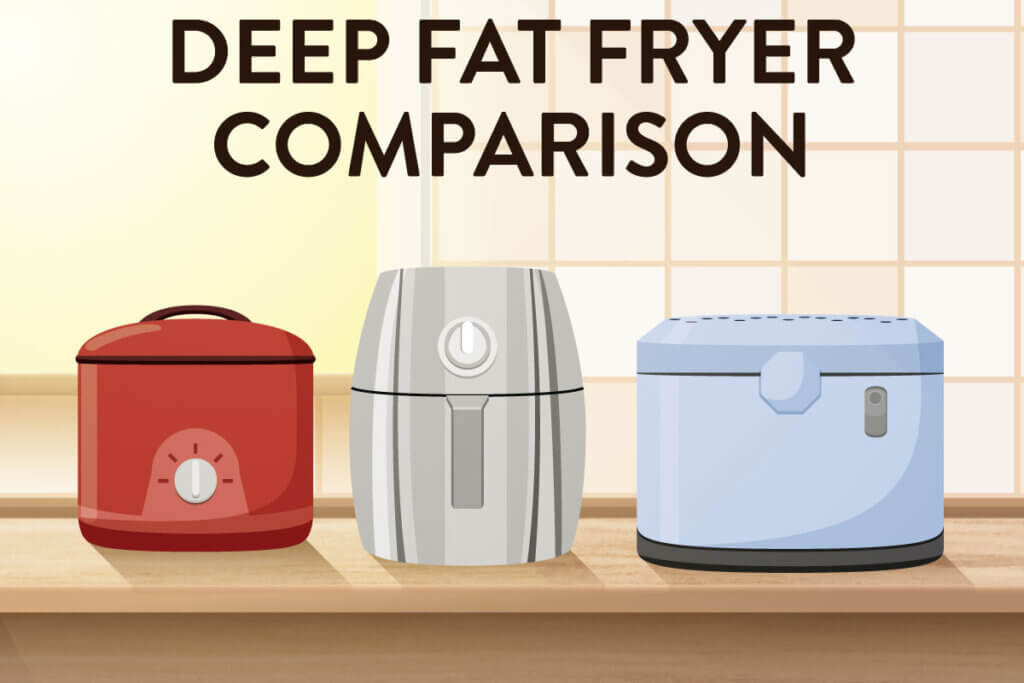
As hot as it gets: deep fryers
Potatoes are some of the most popular carbohydrates in the world. One of their biggest advantages is that they can be prepared in many different ways. However, one form of preparation has achieved cult status over the years: french fries. Although it is possible to prepare frozen fries in the oven at home, the golden-yellow potato strips only get the right bite and authentic taste in a deep fryer. Since deep fat fryers are not only becoming cheaper, more convenient, and easier to use, but also offer increasingly low-fat and fat-free preparation options, it is hardly surprising that they are making a come-back in today’s more health-conscious society.
French fries
Despite its name, the beloved dish actually originates from Belgium not France. French fries were probably already being prepared in Belgium before 1680.
Of course, you can make more than just fries in a deep fryer. In addition to other potato products such as croquettes, potato pancakes, or wedges, popular deep fryer dishes include meat, fish, and various vegetables such as cauliflower, zucchini, or onions. Even cheese, bananas, strawberries, or apple rings work in a deep fryer. Fryers are also not just for savory foods. Popular desserts from the deep fryer include donuts or apple fritters. There are also interesting trends emerging like deep fried chocolate bars.
How does a deep fryer work?
Deep frying in the true sense of the word refers to a cooking process in which food with a water content is completely immersed in cooking oil or fat heated to temperatures between 284 and 356 °F (140-180 °C) in a deep frying basket. This causes the starch to gelatinize and the protein components to denature, i.e. break down. This makes the fried food more digestible and tastier. The immersion in hot fat ensures that the moisture on the surface of the food decreases, forming a crust and creating flavor.
Different foods absorb a different amount of fat depending on their surface size. Here are some examples:
| Frying medium | Fat absorption |
|---|---|
| Potato chips | Absorb between 30 and 40% of their mass in fat |
| Donuts | Absorb between 15 and 20% of their mass in fat |
| French fries | Absorb between 6 and 12% of their mass in fat |
The added value of a deep fryer compared to frying food in an oil-filled pot is obvious:
- Temperature can be set, controlled, and regulated
- Fat is kept in a closed pot and cannot splatter
- Oil drips from food in a basket while still warm which leads to less fat absorption.
Different types of deep fryers
Deep fryers are kitchen appliances used to fry food in hot oil or fat – for the most part. In addtion to electric and gas-powered deep fryers that use oil or fat, hot air fryers are also an option, even though they do not require any fat. Nevertheless, they are still considered deep fryers, as they can be used to prepare the same foods as conventional deep fryers.
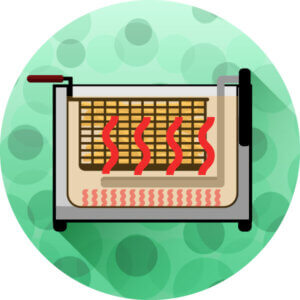
Cold zone deep fryer
The majority of today’s deep fryers, which use oil or fat as a heat transfer medium, have a so-called cold zone. This ensures that the fat at the bottom of the frying container doesn’t heat up too much, which reduces the formation of acrylamide. With this type of deep fryer, the electric heating element is not located in the base plate, as is the case with conventional electric deep fryers, but is submerged directly in the oil – a bit like an immersion heater.
This technology offers some distinct advantages and disadvantages compared to conventional electric deep fryers. The bottom of the frying container remains comparatively cool as the fat down there is only at 122 to 158 °F (50-70 °C). In this “cold zone”, any parts of the crust (like breadcrumbs) that fall off do not burn, which means less acrylamide forms. The oil can be used for longer because the taste is not negatively affected by any burnt bits. Conventional electric deep fryers are at a distinct disadvantage when it comes to this. However, they are easier to clean because the frying container is completely removable and its interior does not come into contact with the heating element.
Here we offer a brief comparison of the advantages and disadvantages of cold-zone deep fryers:
Advantages
- Less acrylamide formation
- Oil can be used for longer
- Lower power consumption
- Better taste
Disadvantages
- Heating element in direct contact with oil
- Heating element always needs cleaning
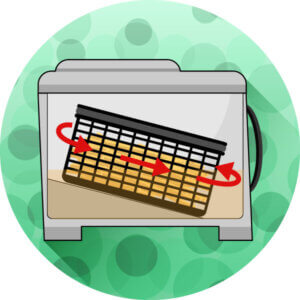
Spin and roto fryers
Spin fryers are a special type of fryer. They also operate on the principle of frying food in oil or fat at high temperatures. In contrast to the conventional deep fryer or the cold zone deep fryer, however, spin fryers prepare the food with less fat. After frying, these models remove excess fat from the food by spinning it around quickly, like a salad tosser. The round frying basket rotates on its own axis and makes use of centrifugal force to remove more fat from the surface of the food before consumption.
Roto fryers function with less fat by repeatedly immersing the food in the hot fat for only short periods of time. In contrast to the spin fryer, the basket is not suspended horizontally but at a slight angle.
Advantages
- Less fat in the food
- Typical deep frying aroma is retained
- About 50% less oil needed
Disadvantages
- Less suitable for large dishes
- Less capacity
One disadvantage of these low-fat preparation methods is that they are not equally suitable for all foods. However, unlike air fryers, they offer that same typical deep frying aroma and taste.
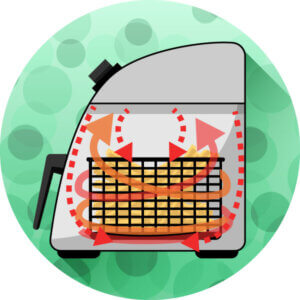
Air fryer
Air fryers are very popular with amateur chefs. This is hardly surprising, as they offer a number of advantages over conventional deep fryers. Particularly in view of increasingly popular low-fat diets, the possibility of deep frying food without using loads of grease is tempting. Trans fats, which are produced by heating processed oils and fats, are largely eliminated in this cooking method. Acrylamide formation is also significantly reduced in hot-air fryers. Another distinct advantage is that you don’t need to dispose of fat, which, depending on the country you live in, can be cumbersome and harmful to the environment.
Hot air fryers require very little oil. In most models, only 10 ml of fat needs to be added. This is due to the way these appliances work: they do not deep fry the food in fat, but cook it with a circulating stream of hot air. This process offers some significant advantages, but it is not entirely without drawbacks:
Advantages
- Low-fat and low-calorie preparation
- Safer, as no oil can spill or splash
- Minimal odor formation
- Other foods can also be prepared
- Little cleaning required
- Less follow-up costs as hardly any oil is needed
- Energy-saving
Disadvantages
- Higher initial costs
- Longer preparation time
- Sticking together of foods if no stirring function available
- No typical deep frying taste
- Some acrylamide is still formed
Hot-air fryers are more expensive than their conventional counterparts and take much longer to fry food. Preparation times of 15 to 30 minutes are not uncommon. On the other hand, they are much safer and easier to clean because of the absence of hot fat. In addition, they are more versatile because they do not fry in the conventional sense and you can also use them to prepare dishes such as stew, bread, pizza, or cake.
However, you should also avoid cooking temperatures of over 356 °F (180 °C) if you want to avoid the formation of acrylamide in high quantities. The fat content in the cooked food is indeed significantly lower than in conventional deep fryers. In this respect, air fryers are the healthier alternative.
Gas fryers
Gas-powered deep fryers are used less in private households and more in the commercial sector. They are larger and more expensive. However, the operating costs compared to electrically operated appliances are considerably lower. All deep fryers for private use are usually electric models.
What should I look for?
Every deep fryer should be made of stainless steel and be easy to clean. Rubberized feet are important so that the deep fryer does not tip over easily and cause a mess or, more importantly, serious injury. Other relevant criteria depend on the type and functionality of the fryer in question.
What to look out for with models using hot fat?
Every deep fat fryer, i.e. conventional electric deep fryers, cold-zone deep fryers, roto fryers, and spin fryers, should provide an outlet opening through which you can safely drain the fat. For safety reasons, this should not be too easily accessible or too easy to open – otherwise fat might leak when still boiling hot. The heating device should also have a safety feature to prevent burns. A temperature regulator, an automatic temperature limiter, and a timer are also a must-have to prevent the food from overheating and burning. It is considerably easier to clean a deep fryer properly if the frying pot is removable and dishwasher-safe.
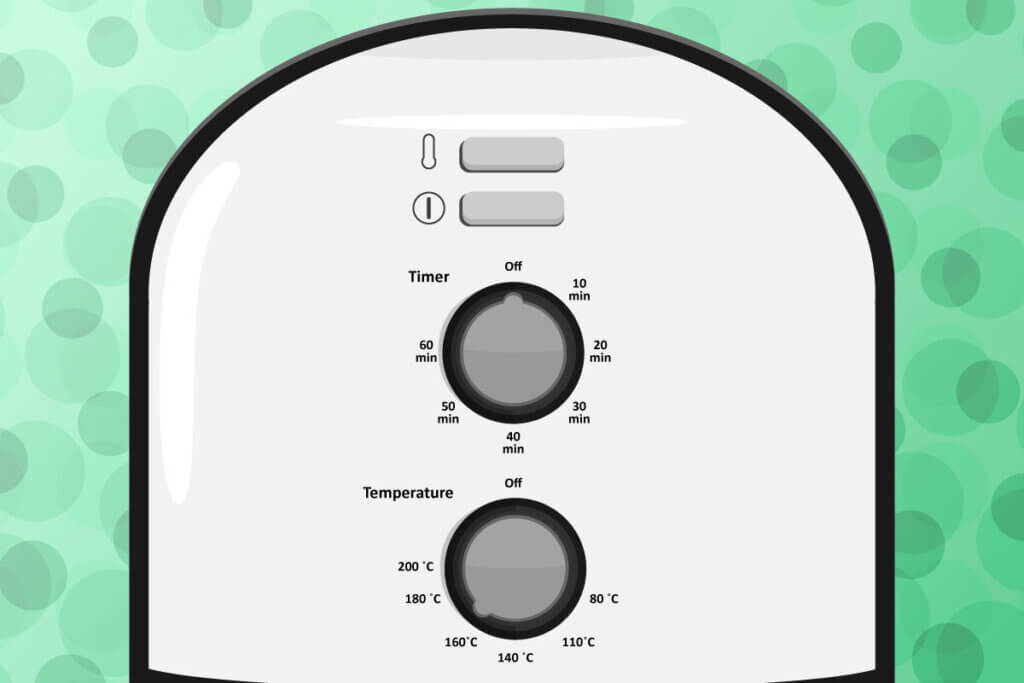
However, cold-zone deep fryers rarely have any extras, special functions, or accessories. For ease of use, choose a model that has a display.
For home use, it can also be advantageous if your deep fryer has several frying pots and baskets, because you should use different tools for different types of food to get the best results.
You should also pay attention to sufficient power output. The more watts (W) a device has, the faster the frying fat reaches the desired cooking temperature. However, if the wattage is too high, there is a risk that the fat will become too hot, thus promoting the formation of acrylamide. Appliances between 1400 and 1800W are recommended and are now considered the norm.
Here is a checklist for the most important functions and features:
- Outlet opening for fat change
- Safe and separate heating device
- Temperature controller
- Temperature limiter
- Timer function
- Dishwasher-safe frying pot
- Display
- If necessary, several frying baskets
What to look out for with air fryers?
If you decide to buy an air fryer, you should always make sure that the appliance has an automatic stirring function. This ensures that the food is mixed and turned regularly. This is necessary due to the lack of oil or fat. Since the heat cannot reach all parts, the food will not be fully cooked if it isn’t stirred, and it can stick together.
Air fryers should have a viewing window. This allows you to see how far the cooking process has progressed during operation without having to interrupt the process and open the appliance, losing precious heat in the process.
A temperature control with a display and a timer are standard features. A drip tray is necessary to catch any excess fat that comes off the food during cooking. Since air fryers let you make lots of different dishes, having a model with additional parts, for example for grilled food, is a good idea. A measuring cup or measuring spoon should also come included. This allows you to precisely measure out the small amounts of fat you need to add.
Here are the most important purchase criteria when it comes to air fryers:
- Automatic stirring function
- Viewing window
- Removable compartment for deep frying food
- Temperature control
- Temperature limiter
- Timer
- Dishwasher-safe compartment for deep frying food
- Display
- Drip tray for excess fat
- Separate grill insert
- If necessary, several frying baskets
Tips for using a deep fryer
There are a number things you should know, not only when buying, but also when using your deep fryer, in order to use it as safely as possible and to be able to enjoy the appliance for a long time.
Health and safety come first
Hot oil or fat can, of course, be dangerous and cause serious burns and injuries. Therefore, you should make sure that your deep fryer always has a firm footing on a level surface. It should also have a mechanism that protects against splashing fat, be it a lid or a bonnet. The splash protection should also still work after the deep frying basket has been lifted. This is not the case with all appliances. With these models, you need to take special care when lowering and lifting the deep frying basket.
Improper use does not only result in safety risks associated with hot oil. If you prepare food incorrectly, you can also run into trouble. To prevent both of these things, the following precautions are recommended:
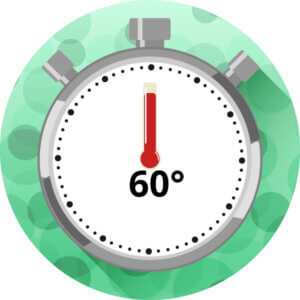
Preheat fat
After adding solid fat, you should first preheat it for a few minutes at a maximum of 140 °F (60 °C) to melt it. Only then should you set the operating temperature. This prevents the fat from being heated too much, resulting in splashes and the formation of harmful oxidative substances.
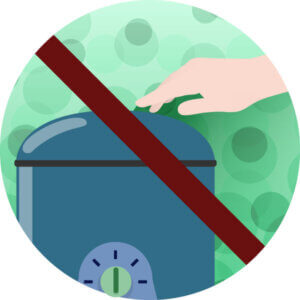
Keep the lid closed
It is essential to keep the lid of the deep fryer closed during frying. If you lift the lid in the middle of frying, you run the risk of getting spashed by hot fat or burning your fingers on the residual heat.
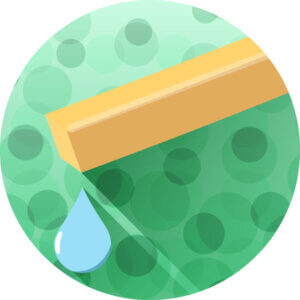
Remove condensation water
Wet food must be dried off before it is submerged in the hot fat. Frozen food must be slightly thawed and then dried off as well. If the surface moisture is too high, the fat will splash more.
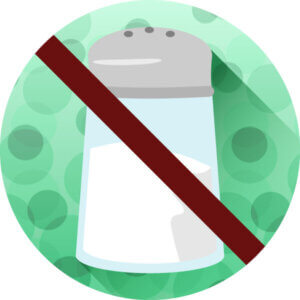
Do not salt fried food in advance
Under no circumstances should you salt food before placing it in the deep fryer. This is because adding salt causes water to migrate from inside the food to its surface, leading not only to splashing fat but to the formation of toxic substances.
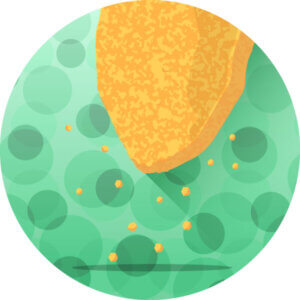
Shake off crumbs
Superfluous crumbs should be removed before placing food in the deep fryer. In the hot fat, these small starchy components carbonize quickly, forming harmful substances which will make your grease spoil faster.
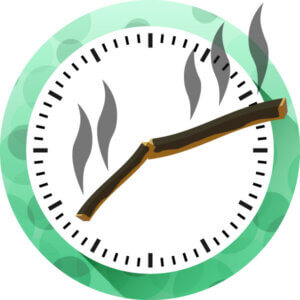
Observe frying times
If fried food is left in hot fat for too long, it will get too brown and absorb too much fat. This produces large amounts of acrylamide and other substances such as nitrosamines and sodium nitrite, which aren’t good for you.
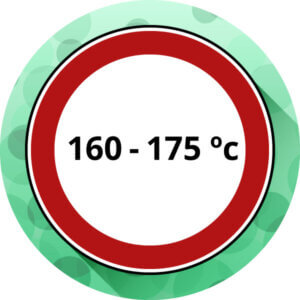
Maintaining frying temperatures
The frying temperature should constantly be in a range between 320 and 347 °F (160-175 °C) and under no circumstances exceed the 356 °F (180 °C). Higher temperatures lead to fat spoilage and increased acrylamide formation. Too low temperatures lead to fat spoilage
The acrylamide question
Acrylamide is formed when starchy foods such as potatoes are overheated. Swedish researchers proved this in 2000. The temperature needed for this is generated during several cooking methods like baking, frying, grilling, roasting, and deep frying. Especially when potatoes and grains are heated dry, acrylamide begins to form at 248 °F (120 °C). The amount formed in food increases rapidly between 338 and 356 °F (170-180 °C).
Acrylamide attacks human DNA and is converted in the liver into glycidamide, which is carcinogenic. However, it is highly controversial whether acrylamide ingested through food can cause negative effects to humans; a study from 2003 even refutes this.
Acrylamide…
… belongs to the chemical group of amides and is mainly formed from the amino acid asparagine as a starting material in combination with sugars such as glucose and fructose. Asparagine is mainly found in potatoes and cereals.
It should be noted that a diet completely free of acrylamide is not possible and an intake in small quantities is most likely not harmful to human health. Due to the lack of in-depth knowledge on its health effects on humans, a maximum acrylamide limit in food has yet to be defined by health organizations – contrary to widespread opinion.
In order to keep the formation of acrylamide as low as possible, it is recommended not to store potatoes below 39.2 °F (4 °C), as they form more fructose which is one of the “ingredients” for acrylamide. In addition, changing the way potatoes are prepared can reduce potential acrylamide content. For example, reducing the frying and baking temperature by a few degrees can already significantly inhibit the formation of acrylamide. Nowadays, due to cold-zone deep frying technology, acrylamide formation is as low as possible.
Regular cleaning
Regularly cleaning yourdeep fat fryer is absolutely essential to ensure good flavors, kitchen hygiene, and the longevity of the appliance. Cleaning is usually quite simple, especially with hot air fryers. The parts that come into direct contact with food or oil are completely removable and usually dishwasher-safe. Due to the small amount of oil, there is nothing special to consider in this regard.
On the other hand, if you go for a cold-zone deep fryer you should pay attention to a few things. For instance, you should change the oil in the deep fryer after five uses at most. For this, your deep fryer should have a drain hose, drain tap, or a drain opening through which you can drain the oil into a collection container. If the fat has hardened you should first liquefy it before draining it. The emptied deep frying pot should be dishwasher-safe and easy to clean.
Cold zone deep fryers, where the heating element comes into direct contact with fat, require additional cleaning. This should of course first be allowed to cool down as you need to clean it by hand. All cleaned parts should be completely dry before reuse. It is always important to follow the instructions in your fryer’s manual.
Frequently asked questions
The most frequent questions from prospective customers about deep fryers mainly relate to their correct use and the deep frying process. We address some of them:
Which fat should I use for deep frying?
Animal fats, no matter what kind, are not suitable for frying food in a deep fryer. Equally unsuitable are highly unsaturated vegetable oils such as sunflower oil, virgin olive oil, or corn oil. These oils have a low smoke point which means they spoil quickly and cannot withstand the high temperatures in a deep fryer.
In contrast, pure vegetable fats and vegetable oils with a low amounts of polyunsaturated fatty acids are suitable, for example:
- Peanut fat
- Coconut fat
- Refined olive oil
- Peanut oil
Oils are excellent for short frying in private home use. If you want to use fat, it’s best to purchase special frying fat.
How much fat do I need?
The amount of fat you should use in your deep fryer depends on its capacity and the amount of food you want to fry. There are usually two marks inside a deep fryer that signal the minimum and maximum amount of grease that can be added. With too much grease, the fryer will splash or leak; with too little, the food will not cook completely. The amount of grease should allow the food to be completely covered and reach just below the surface.
When should I change the frying fat?
Although cold-zone deep fat fryers considerably extend the usability of grease, you should still replace it regularly. This is because every time it is used, bits of food come off and accumulate in the bottom. This not only darkens the fat and develops an unpleasant odor, but it also affects the taste of the food. You should therefore change the fat if:
- the fat has a brown color,
- smoke develops during deep frying,
- the fat smells unpleasant,
- the fried food tastes bitter or bad, or
- the fat draws threads and is viscous when it drips off.
In general, it is recommended to change the fat after five uses or after twenty hours of operation. You should always change the entire fat or oil, and not just add to the old to replenish it. The fat can last longer if you remove ice and other impurities from the food before placing it in the fryer.
How do I know when the deep fryer is hot?
The deep fryer fat should have a temperature of 329 to 347 °F (165-175 °C). Modern deep fryers usually have a temperature display that makes it easy to read the temperature, as well as a thermostat that allows the temperature to be adjusted.
Since food has a lower temperature than the fat, the fat’s temperature will cool down when the food is added. Therefore, you should be careful not to put too much food into the deep fryer at once, but rather fry in small batches. To prevent the formation of acrylamide and to ensure that the food is cooked evenly and completely, you should keep the fat temperature between 338 and 356 °F (170-180 °C) after lowering the frying basket into the fat or oil. Under no circumstances should the temperature exceed 356 °F (180 °C).
Images 1-12: © FinalCheck

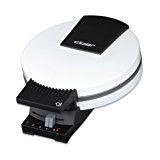
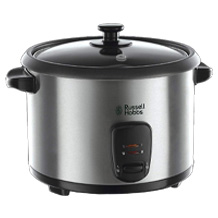
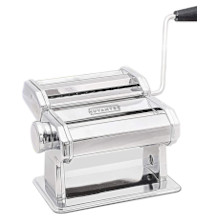
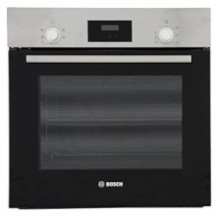
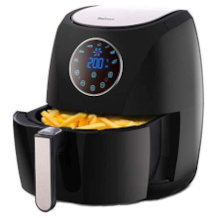
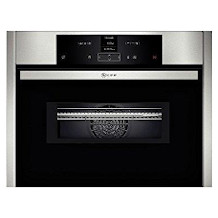
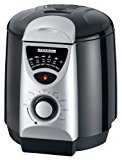
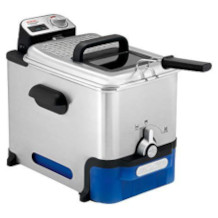













 7,478 reviews
7,478 reviews







